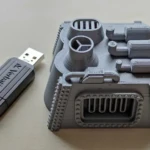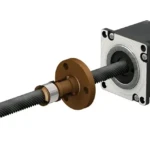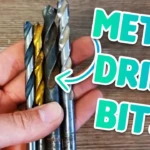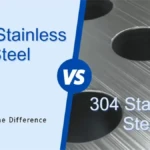Unveiling the Mystery of Metal: Your Comprehensive Beginner’s Guide to CNC Milling (Why Five Axis May Be Your Secret Weapon)
So you’ve heard the buzz, seen the precise cuts, and can even hold the perfectly machined part. CNC milling fascinates engineers, designers and manufacturers, providing the ability to convert raw materials into complex functional components. But for beginners, entering the world will feel overwhelming. Fear not to! This guide breaks down the basics of CNC milling, the process and why partners like Greatlight can turn your ideas into reality faster and more reliable than you think.
What exactly is CNC milling?
CNC stands for computer numerical control. Milling is a subtraction manufacturing process, which means it starts with a solid block (or "Blank") Materials (metal, plastic, wood, composites) and precisely remove layers to form the desired shape. It can be considered as a highly complex computer automatic engraving machine.
this "CNC" Part of this refers to the entire operation – the movement of the cutting tool across multiple axes, its rotation speed, the depth of the cutting, and the speed of its movement – is determined by the programming instructions (G code). This eliminates human error (mainly!) and allows manual machining to fail to obtain incredible repetition and complexity.
Core components of CNC milling machines:
- Controllers and software: The brain of the machine. CAD (Computer Aided Design) software design parts. CAM (Computer Aided Manufacturing) software designs as precise tool paths (G-codes) that machines understand.
- Machine Framework: The rigid structure required to handle cutting forces without bending is provided to ensure accuracy.
- Worksheet: Securely secure the workpiece with Vises, fixtures or specialized fixtures.
- Spindle: The electric unit rotates the cutting tool at high speed (measured at RPM – measured per minute). Its power determines the material that can be cut efficiently.
- Cutting tools: Various drill bits (end mills, face mills, drill bits, faucets) made of hardened materials (such as carbides or high-speed steel). Each tool shape performs specific tasks (rough, finishing, drilling, creating slots).
- axis: Movement functions of the machine:
- 3-axis (basic): The tool moves linearly in X (left or right), Y (front and back) and Z (up and down). It is essentially one direction close to the workpiece.
- 4 axis: Adding rotation around the X-axis (A-axis) usually allows the part to rotate, thus machining on multiple sides without re-fixing.
- 5-axis (advanced): Increase rotation other Axis (usually y, becomes b axis, or z becomes c axis), or use an incline/rotate spindle. This allows the tool to actually go from Any angle At the same time.
The CNC milling process simplifies:
- Design (CAD): Create a detailed technical diagram of 3D models or parts.
- Programming (CAM): Load the CAD model into the CAM software. definition:
- geometry: Part boundaries and functions.
- Tool path: The specific route the cutting tool will take.
- tool: Select the right cutter for each operation.
- Speed and Feedback: Optimize spindle RPM and tool movement speed (IPM-per minute) for tools and materials.
- Coolant Strategy: How to manage heat and remove chips (flood coolant, mist, air).
- set up: Secure the workpiece to the table and install the required tools on the machine’s tool holder or spindle. Set the workpiece origin (base).
- Simulation (optional but crucial): In fact, run the program to check for collisions and machining errors – saving time and preventing expensive crashes!
- Processing: Load the G-code program and press Start. The machine executes instructions accurately.
- examine: Verify that the finished parts meet specifications using an accurate measurement tool (caliper, micron, CMM).
Why beginners should understand (and accept) five-axis machining:
It is common to start with 3 axes, but the advantages of 5 axes CNC milling are profound, especially for complex parts:
- Complex geometry in a setup: The machine is incredibly complex in shapes (organic profile, undercut, deep cavity, tilted features, turbine blades, aerospace components) without having to flip the parts multiple times. This greatly reduces the setup time and potential alignment errors.
- Top surface finish: By keeping the tool optimal angle relative to the surface (cut with the tool’s tip/side), the 5-axis always provides a higher quality finish, reducing or eliminating hand-finished finishes.
- Enhanced tool life and performance: The ability to tilt tools or workpieces allows for the use of shorter, more rigid cutting tools (reduced vibration) and access features at better cutting angles, extending tool life and allowing for faster material removal rates.
- Reduce delivery time and cost efficiency: Compared to multi-step 3-axis machining, the complex geometry has fewer settings, and the faster machining cycles represent faster delivery of parts and generally cheaper.
GRESTLIGHT: Your Precision CNC Milling Partner
Navigation of CNC machining, especially 5-axis, requires expertise, advanced technology and careful attention to detail. As Professional five-axis CNC processing manufacturerGregmight embodies these principles. Here is how we turn the concept of beginners into a perfect reality:
- Advanced five-axis technology: We invest in state-of-the-art CNC machining centers equipped with the latest controls and high-precision spindles. It’s not just the axis; it’s about the rigidity, accuracy (in microns) and dynamic performance of the machine to reliably take advantage of this all-motion freedom.
- Deep material knowledge: Whether it is aluminum, hardened steel, stainless steel, exotic titanium alloy, brass, copper or high-end plastic, we will understand how to apply it effectively. We optimize speed, feed, tools and coolant for each specific material to prevent common beginner traps such as tool breakage or poor surface effect.
- Engineering expertise: Our team is more than just machine operators; they are skilled mechanics and manufacturing engineers. We pre-analyze the design of Manufacturing (DFM), propose optimizations to reduce costs and lead times, and specialize in programming complex tool paths for efficiency and quality.
- End-to-end solution: In addition to processing, we also provide comprehensive Post-processing and completion of services – Burr, polishing, heat treatment, anodizing, plating, paint, powder coating, silk screening and assembly. Really one One-stop shop.
- Quickly customize and compete for pricing: "Most materials can be quickly customized and handled." We are thriving on customized projects. Our effective process, bulk material procurement and precise focus enable us to provide Best Price for Custom precision machining No sacrifice of quality or speed.
Conclusion: Start with precision
CNC milling is a powerful driving force for innovation. Understanding the basics from CAD/CAM to tools and fixed provides a solid foundation. However, leveraging its full potential, especially for complex high-precision metal parts, often requires the use of advanced features such as five-axis machining and working with experienced experts.
For projects that require complex geometry, superior finishes, reduced lead times and uncompromising quality, adopting five-axis technology from the outset is probably the most efficient road. Greatlight Five-axis CNC machining is a designer, engineer and business seeking reliable, experienced partners to bring their most complex and demanding precise parts to life, deliver on time and at the right price.
Customize your precision parts now. Experience Greatlight Advantage – Contact us for a quote and discover how our expertise in advanced five-axis CNC machining can solve your metal parts manufacturing challenges.
FAQ: Your CNC milling question has been answered
-
Q1: Which materials can be used in Greatlight Machine?
A: We machine a vast array: aluminum alloys (6061, 7075), steels (mild, tool steel, stainless grades like 303, 304, 316, 17-4 PH), titanium (Grades 2, 5), brass, copper, nickel alloys (Inconel), and various engineering plastics (PEEK, Acetal, PTFE, Nylon).
-
Q2: Why is choosing a five-axis better than my three-axis?
A: If your part has complex curves, multiple angles/side features, deep cavity, undercut or requires very high surface quality, choose five axes. 5-axis allows it to be processed in a single setup, saving time, reducing the risk of errors, and often producing better results. We recommend this is the most effective method during DFM.
-
Question 3: How long does a typical CNC milling project take?
A: Advance time varies according to complexity, materials, parts sizes, completion requirements, and our current workload. Simple parts can be days, and complex parts can be weeks. We prioritize efficiency and communication and provide quotes for estimated timetables in advance. "Quick processing" It means we optimize each stage.
-
Q4: What file format is required for CNC processing?
A: The preferred format is the step (.STP) or IGES (.IGE) of the 3D model because they contain precise geometric data. We can also cooperate using 2D graphs (PDF, DWG, DXF) with sufficient size and tolerance.
-
Q5: What design precautions are important for CNC milling parts?
A: Key considerations include: avoiding excessive thin walls/features, combining appropriate radii on the inner corners for tool clearance, and using standard tool sizes where possible, clearly specifying critical dimensions/tolerances, minimizing settings (or designing 5-axis efficiency), selecting manufacturing materials, and designing appropriate fixtures/fixes/fixes/fixes/fixes (DFM) (DFM).
-
Question 6: Can you process hard metal?
A: Yes, absolutely. Our advanced machines and specialized tools (carbide or ceramic end factory) enable us to efficiently mechanically manufacture pre-hardened tool steel, firm parts and other strong materials.
-
Q7: What level can I expect?
A: We specialize in research Precise processing. Typical feature tolerances we always maintain between +/- 0.005 inches (+/- 0.127 mm) to +/- 0.0005 inches (+/- 0.0127 mm) or higher tolerances depending on part geometry, material, size and specific requirements. We define the tolerance function per item.
-
Question 8: Do you offer a finishing option?
A: Yes, we offer a comprehensive suite One-stop post-processing service: Bead blasting, polishing (various grit), heat treatment (annealing, hardening, pressure relief), anodizing (type II, type III hard jacket), plating (nickel, chrome plating, chrome plating, electronickel), paint, powder coating, silk coating, silk screening, simple assembly and packaging.
-
Q9: How do you ensure quality?
Answer: The quality is deeply rooted. We adopt a rigorous process: thorough DFM reviews, advanced CAM programming with simulated, skilled setup and operation, process inspection and final inspection using calibrated precise measurement equipment (calipers, microns, height measurements, sometimes coordinated measuring machines (CMMS)). We always adhere to strict quality control protocols.
- Q10: How to start a quote?
Answer: Contact us directly! Provide your CAD files/drawings, specifying the required materials, quantity, finishes and any critical tolerances. Our engineering team will review its manufacturability and quickly provide competitive quotes, outlining the best approach (3-axis or 5-axis) and lead times. "Customize your precision parts now at the best prices!" – Start by reaching out!

















